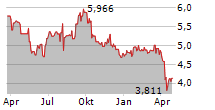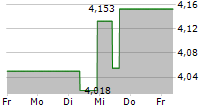
Pursuing Miniaturization and Lightweight Design for Deployment on Drones and Vehicles Achieving High-Speed, High-Capacity Communications in Areas with Difficult Cellular Connectivity Such as Mountains and Disaster Zones
TOKYO, July 30, 2025 - (ACN Newswire) - Sharp Corporation has reached an agreement with Mitsubishi Chemical Corporation (Headquarters: Chiyoda-ku, Tokyo; President: Manabu Tsukimoto), the National Institute of Information and Communications Technology (NICT) (Headquarters: Koganei City, Tokyo; President: Hideyuki Tokuda), and TECHLAB Co., Ltd. (Headquarters: Tama City, Tokyo; President: Hiroshi Hatakeyama) to collaboratively develop ultra-compact and lightweight LEO (Low Earth Orbit) satellite communication user terminals for mobility applications.
LEO satellite communication enables high-quality, high-speed connectivity even in challenging environments such as mountainous regions, at sea, and on remote islands. Sharp began developing LEO satellite communication user terminals in 2023 (*2), applying design and communication technologies honed through smartphone development to create a compact model (approximately 446 x 446 x 66mm) weighing around 7kg. The goal of this agreement is to accelerate efforts towards practical implementation by fiscal 2025, targeting deployment on vessels and other platforms.
With this new agreement, the development of even smaller and lighter LEO satellite communication user terminals will commence in collaboration with Mitsubishi Chemical, NICT, and TECHLAB. A form factor about one-tenth the size (approximately 200 x 200 x 30mm and 1kg) of the currently developed terminal will be aimed through the development of lightweight, high thermal conductivity composite materials and superior heat dissipation designs. By enabling deployment on mobility platforms such as drones and vehicles, applications of LEO satellite communication will be significantly expanded, ensuring communication lines in mountainous areas and disaster zones, enabling real-time location data transmission, and facilitating usage in autonomous vehicles.
This initiative will be showcased at the Sharp booth (*2) (South Exhibition Hall, Satellite Data and Space Utilization Area S6-34) and at the Mitsubishi Chemical booth (S7-11) during the "SPEXA - [International] Space Business Exhibition 2025," held at Tokyo Big Sight (Koto-ku, Tokyo) from July 30 (Wednesday) to August 1 (Friday).
Roles of Parties Involved
- Sharp: Development of LEO satellite communication user terminals utilizing miniaturization and communication technologies cultivated in smartphone design.
- Mitsubishi Chemical: Development of new lightweight, high thermal conductivity composite materials for heat dissipation plates.
- NICT: Overall design and simulation of antennas for ultra-miniaturization and lightweight structures, including heat dissipation designs.
- TECHLAB: Material molding and processing of new materials.
Contacts
NTN_B5G@sharp.co.jp
*1 This terminal integrates LEO satellite communication antennas and modem functions. LEO stands for Low Earth Orbit.
*2 The development of LEO satellite communication user terminals and participation in SPEXA is supported by a grant from the National Institute of Information and Communications Technology (NICT). (JPJ012368G50501)
Source: Sharp Corporation
Copyright 2025 ACN Newswire . All rights reserved.
© 2025 JCN Newswire



